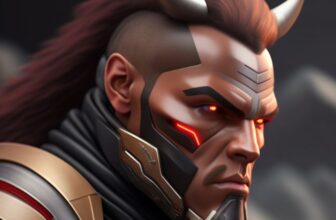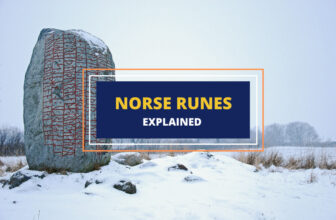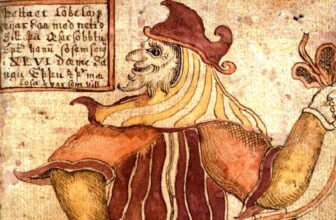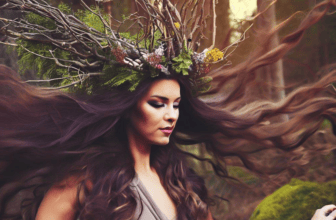
Table of Contents
Most cultures across the globe have legends of dragons and terrifying serpent-like monsters, and the Norse are no exception. In addition to Jörmungandr, the terrifying World Serpent and slayer of Thor, the other famous Norse dragon is Nidhogg – the ultimate symbol of decay, loss of honor, and villainy.
Who is Nidhogg?
Nidhogg, or Níðhǫggr in Old Norse, is a horrifying dragon that live in the roots of Yggdrasil itself. As such, Nidhogg wasn’t often featured or even mentioned in many Norse myths as those took place within the Nine Realms, including Asgard, Midgard, Vanaheim, and the rest.
Nevertheless, Nidhogg was ever-present and his actions brought about the most crucial even in all of Norse mythology – Ragnarok.
Nidhogg, His Brood, and the Destruction of the Universe
Nidhogg is named after a special Old Norse term for the loss of honor and the status of a villain – níð. Nidhogg was a villain and a menace to all of existence.
In Norse legends, Nidhogg is said to have had a brood of other minor reptilian monsters who helped him gnaw at the roots of Yggdrasil for all eternity. Given that Yggdrasil was the World Tree that kept the Nine Realms of the Universe bound together, Nidhogg’s actions were literally gnawing at the roots of the cosmos.
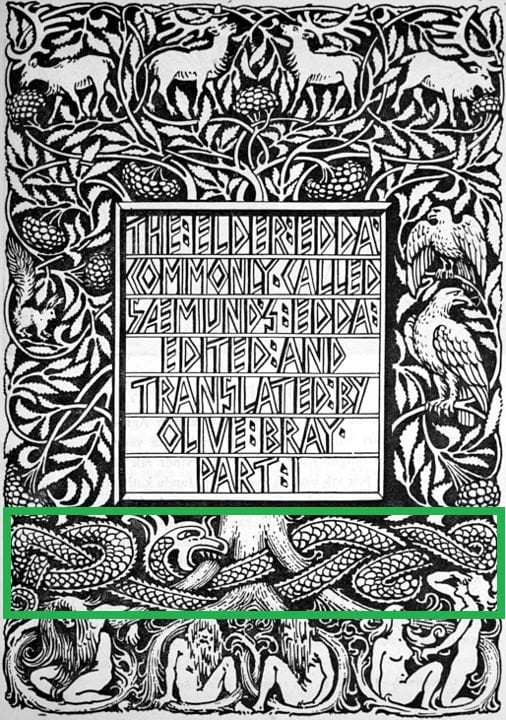
Nidhogg and the (Christian) Afterlife
The Norse idea of an afterlife is very different from that of other cultures and religions. There, the heaven-like afterlife, called Valhalla and/or Fólkvangr, is full of battles, feasts, and alcohol while the hell-like afterlife – called Hel after its overseer – is described as a cold, mundane, and boring place.
This is something that one particular Nidhogg myth stands in contrast with. In the Náströnd poem (translated as The Shore of Corpses), Nidhogg resides over a particular part of Hel where adulterers, murderers, and perjurers are punished.
However, while the Náströnd poem is a part of the Poetic Edda, Nidhogg’s role in the underworld is generally ascribed to the Christian influence during that period.
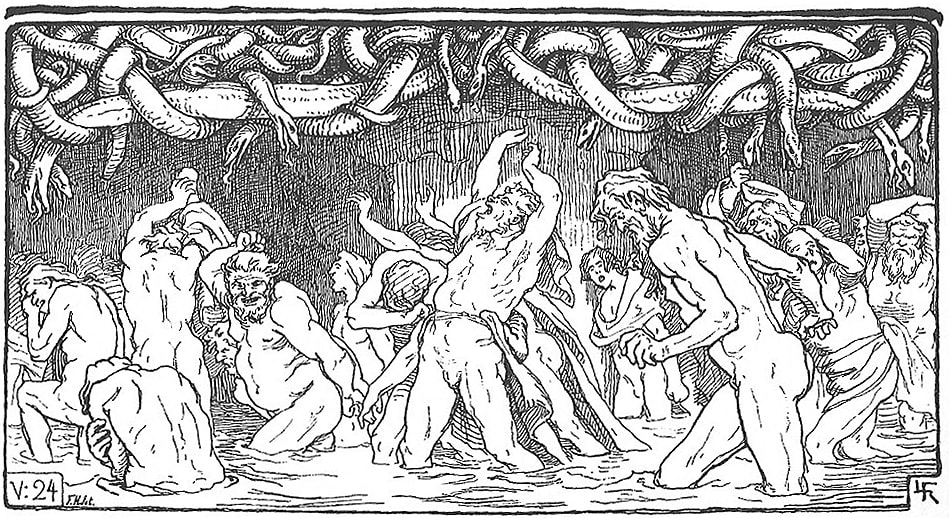
In virtually all other Norse descriptions of Hel or Helheim, the Norse underworld isn’t a place of active torture and punishment but just a realm of eternal boredom and uneventfulness. So, the most likely hypothesis here is that the Christian influence of the time led to “the big scary monster” Nidhogg being associated with a more Christianized version of the Norse underworld.
Nidhogg and Ragnarok
One myth that’s definitely core to Norse mythology, however, is the story of Ragnarok. While Nidhogg isn’t overly active during the great Final Battle – only the Völuspá poem (Insight of the Seeress) describes him as flying out from beneath the roots of Ygdrassil – he is the undisputed cause of the whole cataclysm.
Depending on which myth you read, Ragnarok can seem like it has several beginnings. However, when looked at together, all the events of Ragnarok easily fit into chronological order:
- First, Nidhogg and his brood gnaw at Yggdrasil’s roots for an eternity, compromising the very existence of our Universe.
- Then, the Norns – the fate-weavers of Norse mythology – initiate Ragnarok by starting the Great Winter.
- Then, the World Serpent Jörmungandr releases its own tail from its jaws and spills the oceans over the land.
- Lastly, Loki invades Asgard with his horde of ice giants on the ship Naglfar and Surtr attacks with his army of fire giants from Muspelheim.
So, while there are several “beginnings” of the Final Battle in Norse mythology, the one that literally starts in the roots of it all is Nidhogg.
Symbolism of Nidhogg
The basic symbolism of Nidhogg is present in the meaning of its name – the great beast embodied the social stigma of villainy and loss of honor.
More than that, however, Nidhogg’s role in the slow decay of the Universe and the initiation of Ragnarok clearly symbolizes the fundemental belief of the Norse people that all things slowly end and die with time – people, life, and the world itself.
While that’s not exactly a “positive” worldview by today’s standards, it’s one the Norse people held and accepted. In essence, Nidhogg is one of the oldest personifications of entropy.
Importance of Nidhogg in Modern Culture
Even though Nidhogg sits at the very center of the whole worldview and structure of Norse mythology, he’s not mentioned or used often enough in modern culture. There are several paintings and sculptures of him over the centuries, usually as a part of larger portrayals of Yggdrasil and the Norse universe.
In more recent times, Nidhogg’s name and concept have been used in video games such as Age of Mythology where he was a monstrous dragon closely related to the god Loki, and Eve Online which featured a Nidhoggur-class carrier battleship.
Wrapping Up
Nidhogg, the dragon that bit away at the World Tree, is responsible for the eventual end of the cosmos and for plunging the world back into chaos. He remains among the most terrifying yet inevitable forces of Norse mythology.




